Great Wildebeest Migration Safari 2026: Routes, Costs, Maps
(Great Wildebeest Migration Safari) others term it as Gnu Migration, Great Migration Serengeti, Masai Mara Migration or Serengeti Migration is one of the most breathtaking natural events on the planet, often nicknamed the “Greatest Show on Earth.” Known as one of the Seven Natural Wonders of Africa, the Wildebeest Migration spans over 800 kilometers through Tanzania and Kenya, captivating visitors with its scale and drama.
Every year, over 1.5 million wildebeests & more, along with hundreds of thousands of zebras and other antelopes, journey across the Serengeti-Mara ecosystem in Tanzania and Kenya. This epic Great Wildebeest Migration Safari is driven by the search for fresh grazing and water, dictated by seasonal rains. It’s a gripping tale of survival, with dramatic river crossings and predator encounters involving lions, cheetahs, and crocodiles.
If you’re planning to experience this Great Wildebeest Migration Safari spectacle in 2026, this guide covers most of the things you need to know about this Budget-Friendly African Safari Tours. From migration routes and safari costs to detailed maps and the best times to visit, we’ve got you covered. Let’s explore what makes this event so popular and how you can plan your perfect safari adventure.
Great Wildebeest Migration Safari Packages
16 Days Wildebeest & Gorilla Trekking
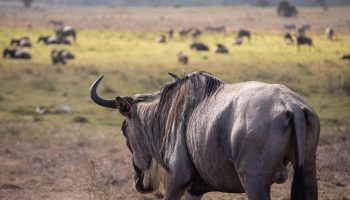
- Experience the wildebeest migration in the Serengeti.
- Trek through forests to see mountain gorillas in Rwanda or Uganda.
- Visit the Ngorongoro Crater and Lake Manyara for extra wildlife.
- Enjoy a mix of safari lodges and camps on this epic journey.
- Combine two bucket-list adventures in one unforgettable trip.
7 Days Wildebeest Calving Safari
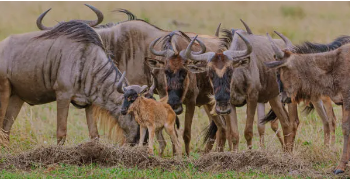
- Witness thousands of wildebeest calves born in the southern Serengeti.
- See predators like lions and cheetahs hunting during calving season.
- Explore the Ndutu area’s plains and lakes on game drives.
- Visit the Ngorongoro Crater to spot the Big Five.
- Stay in cozy lodges or tented camps for a comfy adventure.
6 Days Serengeti Migration
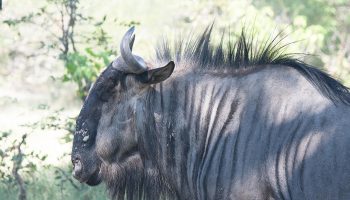
- Watch millions of wildebeest migrate across the Serengeti.
- Spot lions, leopards, and cheetahs on thrilling game drives.
- Explore the central Serengeti for year-round wildlife action.
- Stay in tented camps or lodges tailored to your budget.
- Dive into one of nature’s greatest spectacles in just six days.
15 Days Wildebeest Migration
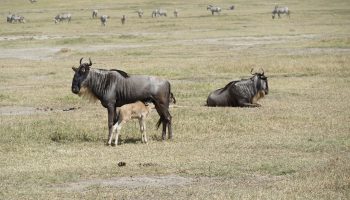
- Follow the wildebeest herds across the Serengeti’s vast plains.
- See dramatic river crossings with crocodiles in action.
- Visit Tarangire and Lake Manyara for more wildlife variety.
- Stay in luxury lodges or mobile camps near the migration.
- Enjoy an in-depth safari adventure over two weeks.
8 Days Tanzania Safari
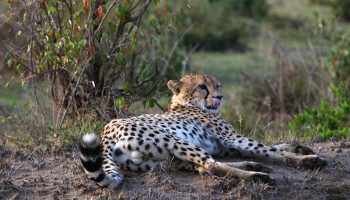
- Explore Serengeti, Ngorongoro Crater, and Tarangire parks.
- Spot the Big Five and diverse wildlife on game drives.
- Visit Maasai villages for a cultural experience.
- Enjoy unique landscapes like the crater’s caldera.
- Stay in lodges or camps suited to your style.
Tanzania Photographic Safari
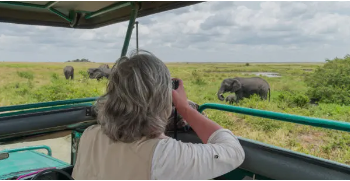
- Capture amazing wildlife shots in the Serengeti and beyond.
- Visit top spots like Ngorongoro Crater for stunning scenery.
- Get tips from expert photography guides on every drive.
- Stay in lodges with great views for perfect photo ops.
- Focus on snapping Tanzania’s beauty on this special safari.
What is the Wildebeest Migration?
The Wildebeest Migration is the world’s largest Land journey migration, a year-round cycle where massive herds move in a roughly circular path across more than 800 kilometers (500 miles), its like from New York City to Cleveland, Ohio or from London to Edinburg. Hmmn, quite long!
Starting in Tanzania’s Serengeti and looping round, then into Kenya’s Masai Mara, the migration is a constant battle for survival. It’s not just about the numbers—it’s the raw drama of nature that captivates travelers worldwide.
Wildebeest Migration Safari Routes: A Month-by-Month Breakdown
The migration as mentioned earlier is round it shifts with the seasons, so knowing what, when and where the herds will be is crucial for planning your 2026 trip. Here’s a month-by-month guide:
- Great Migration in January to March: The herds are in the southern Serengeti and Ndutu area for calving season the pastures are green favoring mounting and raising of calves. During this period, around 8,000-9500 calves are born daily, drawing predators like Lions, cheeters and hyenas; offering incredible wildlife action in search for prey
- Great Migration in April to May: This is the season when the rains reduce, the herds move northwest through the central Serengeti, passing landmarks like Moru Kopjes and Seronera.
- Great Migration in June: The migration splits; some head west along the Grumeti River, while others move north. Early river crossings are sighted and in some cases, it will begin.
- Great Migration in July to August: The herds tackle the Mara River, crossing into the Masai Mara. This is the iconic river-crossing season, a highlight for the safari-goers. This is the photographic moment the travelers love most.
- Great Migration in September to October: The wildebeests graze in the Masai Mara before the short rains trigger their return south.
- Great Migration in November to December: The cycle restarts again as the herds head back to the Serengeti for another calving season. The process continues like that. Book for your favorite time of year.
Wildebeest Migration Safari Maps: Visualize the Journey
A good map is a game-changer for understanding the migration and picking the best viewing spots. Here’s what an interactive map for 2026 might highlight:
Southern Serengeti
Ndutu and the Ngorongoro Conservation Area (calving season hotspots).
Central Serengeti
Seronera and the Western Corridor.
Northern Serengeti & Masai Mara
Mara River crossings and the Lobo area.
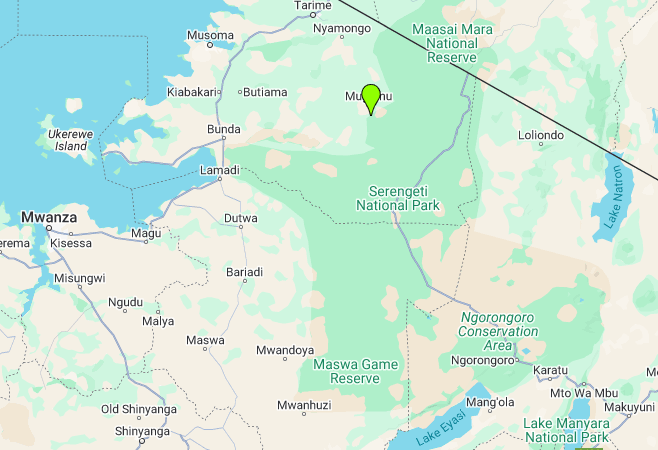
Best Times to See the Wildebeest Migration Safari in 2026
Timing your visit depends on what you want to see. Here’s when to go in 2026:
- Calving Season (January to March): This is the best time to witness calf births and predator-prey interactions. Fewer crowds make it a hidden gem.
- River Crossings (July to August): This is the most popular time of the great migration, with thrilling Mara River crossings. Book early as this is a Peak Season.
- Green Season (November to December): Lush scenery and fewer tourists as the herds return to the Serengeti.
Every season offers something unique, so there’s no wrong time to see the Great Wildebeest Migration Safari
Wildebeest Migration Safari Costs: What to Expect in 2026
Safari costs vary based on your preferences, timing, and accommodation. Here’s a breakdown for 2026:
- Budget Safaris: $300–$500 per person per day. Think shared camping, group tours, and basic amenities.
- Mid-Range Safaris: $500–$800 per person per day. Comfortable lodges or tented camps with smaller groups.
- Luxury Safaris: $800–$1,500+ per person per day. Exclusive lodges, private guides, and extras like hot air balloon rides.
Additional Expenses:
- Flights to Tanzania or Kenya
- Park fees (e.g., Serengeti: $70 per person per day)
- Tips and travel insurance
Pro Tip: Lock in your 2026 by booking early to snag better rates, especially for July and August.
Planning Your 2026 Wildebeest Migration Safari: Top Tips
Make your wildebeest migration Safari trip unforgettable with these practical tips:
- Book Ahead: Lodges and camps near the migration route fill up fast, especially in peak season.
- Pick Mobile Camps: These follow the herds, keeping you close to the action.
- Pack Right: Neutral clothing, binoculars, a camera, and layers for cool mornings and warm days.
- Stay Flexible: The migration’s timing can shift, so build some buffer days into your schedule.
Why the Wildebeest Migration Safari Matters
Beyond its beauty, the great wildebeest migration Safari plays a vital role in the ecosystem, supporting biodiversity and local economies. However, it faces challenges like habitat loss and human encroachment. By choosing Mpenzi Safaris Africa, a leading operator in Eco-Tourism, you can help protect this wonder for the future.







